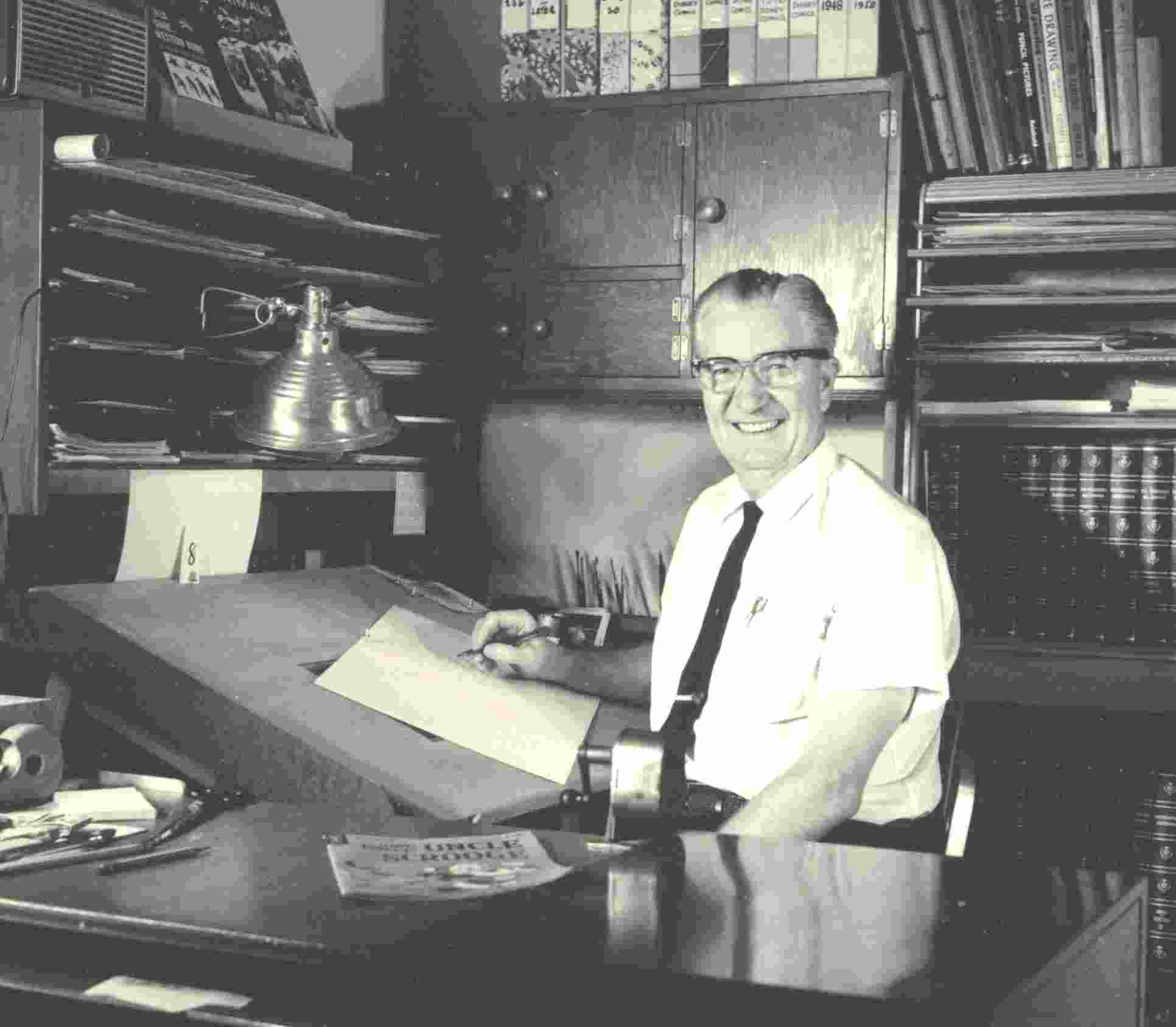

Would-be Disney duck artists are especially
interested in knowing just how long it takes for a professional
to make a finished page for a duck story. Unfortunately, such a
question can hardly be answered to everybody's satisfaction,
because a lot of factors are involved: How long time will it take
for the writer to dream up the plot, make a synopsis, write the
detailed manuscript? How long will the artist take to sketch the
drawings, confer with the writer, ink the pages? Normally, the
task of making a story involves several people starting with the
idea man and ending with the colourist, thus it is very hard to
assess the actual average time consumption for making, say, one
duck story page.
But Carl Barks did it! During the years 1952-1954 he made a list
containing the time that was spent to make an average story page.
It is very important to understand that Barks' notations were for
the graphic part of the page only. Whatever time he used as a
writer was never recorded, probably because this process was done
on a much more nebulous basis, in which he may have worked with
ideas and formulations even when he was doing other things.
The resulting list rendered below in short form carries Barks' own texts (with a few explanatory comments from the editor added), and it gives you a unique insight into Barks' working methods and daily workload at a time when he had become very good and efficient at his job.
| TEXT | TIME AVERAGE IN MINUTES |
COMMENTS |
| Cutting paper | 10 | Whereas most artists drew on the full-sized paper Barks always cut his in half in order to have a more handy format in front of him on the drawing desk. When the two halves were finished he taped them together. |
| Roughing drawings | 75 | After Barks had written the story he would sketch out the panels using a pencil with a light blue lead. Blue colour pencil is not picked up by the cameras in the final production stage. This enables the artist to draw rough lines without having to erase them afterwards. Barks then used tracer pencils to trace tighter lines on top of the loose blue lines. The next stage was a very firm line drawing using a mechanical pen with long leads. |
| Ruling borders | ..5 | The average page contained 8 panel borders which all had to be inked individually. |
| Lettering balloons | 18 | The balloons (also called speech balloons or speech bubbles) required a lot of mathematical thinking, as it was essential that they were precisely large enough to hold the required dialogue. Also, it was essential that the balloons did not cover important graphic parts of the panel. |
| Inking characters | 60 | Barks always did the inking of the characters first starting with their heads. |
| Inking backgrounds | 20 | When the characters were finished Barks inked in the backgrounds. A task which his wife Garé occasionally participated in from 1954 on. |
| Erasing pencil lines | ..5 | Barks used his eraser constantly during the sketching process, but after the inking he would clean up the panels. |
| Blacking solids | 30 | All of the larger areas to receive black ink, i.e. the ducks' shirts, shadows, and silhouettes. From 1954 on Garé did all this work. |
| Whiting mistakes | ..6 | Last-minute repairs... |
| AVERAGE PER PAGE: | 229 |
| . According to Barks' calculations his drawing time average fell into two main groups - Drawing Time (108 minutes) and Inking Time (121 minutes). He also operated with a few supplementary time 'expenses' such as Allowable Variance (20 minutes) and Wrapping And Mailing (6 minutes). |
 |
| http://www.cbarks.dk/THETIMECONSUMPTION.htm | Date 2008-04-29 |